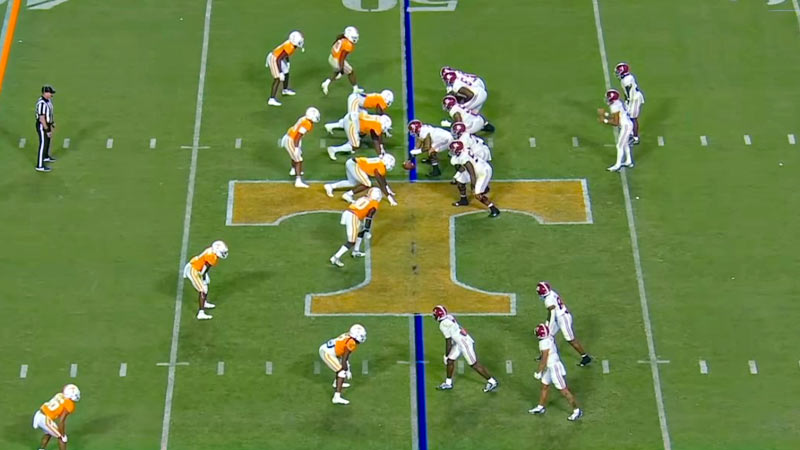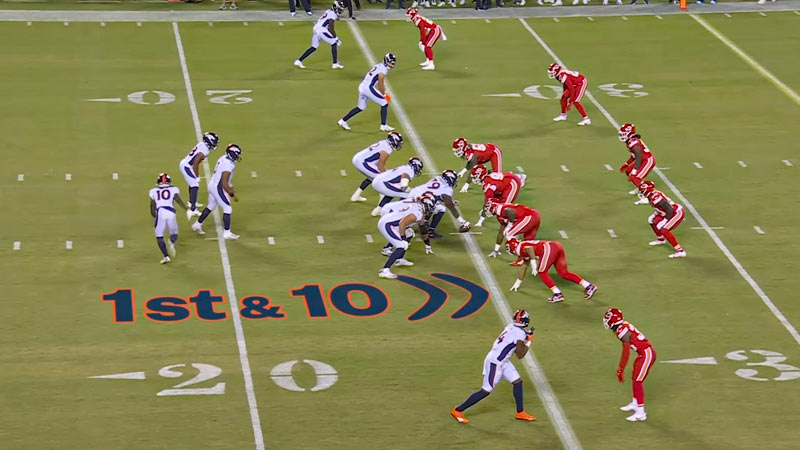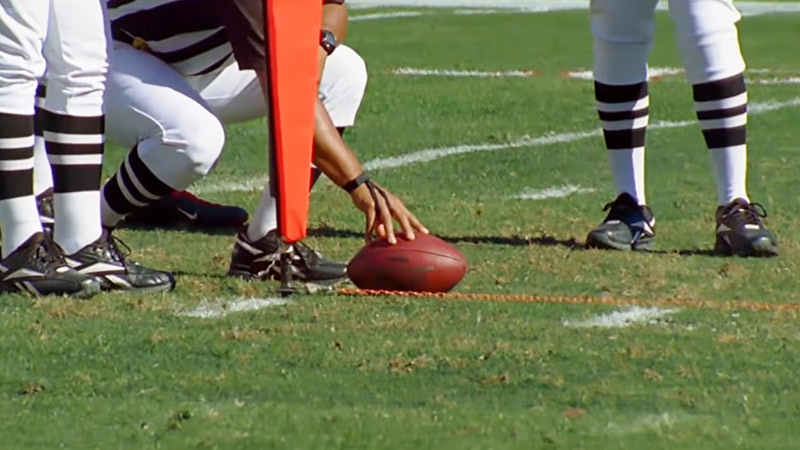In the dynamic world of football, understanding the terminology is key to grasping the intricacies of the game. One of the fundamental concepts is the “1st down,” a phrase often heard during broadcasts and conversations about football.
A 1st down represents the first opportunity for an offensive team to advance the ball toward the opposing team’s end zone. Typically, teams are given four chances, or downs, to move the ball 10 yards down the field.
When a team successfully gains these 10 yards on their first attempt, they earn another set of four downs, effectively resetting their offensive sequence. The significance of 1st down lies in its role as the foundation for a team’s drive.
It’s the starting point, the initial hurdle to overcome, and the catalyst for potential scoring opportunities. To delve deeper into What Does 1st Down Mean in Football, it’s crucial to grasp the essence of 1st Down and its pivotal role on the gridiron.
What Does 1st Down Mean In Football?
In football, “1st Down” is a pivotal and fundamental term that signifies the initial opportunity an offensive team has to advance the ball and gain a fresh set of downs.
To achieve a 1st Down, the offense must move the ball a specific distance, typically 10 yards, within four downs (four attempts). This distance is represented by a series of yard markers on the field, with the starting point being the line of scrimmage, where the ball is snapped.
If the offensive team successfully gains ten or more yards within these four attempts, they earn a new set of downs, allowing them to continue their drive toward the opponent’s end zone.
Failing to do so results in a turnover, with the opposing team gaining possession of the ball at the spot where the last play ended. The pursuit of a 1st Down is a central element of football strategy, often involving a mix of running and passing plays to advance the ball down the field.
1st Down Strategies

Here are some strategic approaches that football teams employ to achieve a 1st Down:
Run Plays
Running plays are a staple for gaining short-yardage 1st Downs. Teams often use power runs or sweeps, with the running back receiving the ball and attempting to break through the defensive line or find open lanes to move the chains.
These plays rely on the offensive line’s blocking and the running back’s agility.
Passing Plays
Passing plays are an effective way to gain substantial yardage and secure 1st Downs. Quarterbacks target receivers downfield, and successful completions can lead to big gains.
Teams often use a mix of short, intermediate, and long passes to keep the defense guessing.
Screen Passes
A screen pass is a short throw to a running back or receiver behind the line of scrimmage. This strategy aims to exploit gaps in the defense, using blockers to create a path for the ball carrier.
Screen passes are often utilized when the defense is aggressive and rushing the quarterback.
Play-Action Passes
Play-action passes involve faking a running play to draw in the defense before launching a pass downfield. This strategy capitalizes on the defense’s anticipation of a run and can lead to open receivers for substantial gains.
Draw Plays
A draw play is designed to catch the defense off guard by initially appearing as a passing play before handing the ball to the running back.
The offensive line uses delayed blocking to create running lanes, making draw plays effective for gaining 1st Downs in situations where the defense expects a pass.
Quarterback Sneak
In short-yardage situations, teams may opt for a quarterback sneak. The quarterback takes the snap and immediately plunges forward, following the offensive line’s push to gain just enough yardage for a 1st Down.
No-Huddle Offense
Utilizing a no-huddle offense can catch the defense off balance and limit their ability to substitute players. Teams can use quick snaps and rapid play-calling to maintain momentum and keep the defense guessing about the next play, potentially leading to a 1st Down.
These strategies showcase the tactical diversity in football, with teams adapting their approach based on the situation, field position, and the strengths and weaknesses of both their offense and the opposing defense.
Each strategy aims to secure the coveted 1st Down and extend the offensive drive down the field.
1st Down Rules

Here are some key rules associated with earning a 1st Down in football:
10-Yard Requirement
To achieve a 1st Down, the offensive team must advance the ball a minimum of 10 yards from the original line of scrimmage. This distance is marked by yard markers on the field, and it signifies the target the offense needs to reach within four downs (four attempts).
Four Downs
The offense has four downs or four opportunities, to gain the required 10 yards for a 1st Down. If they succeed, they receive a new set of downs, typically four more attempts to advance another 10 yards.
If they fail to gain the necessary yardage within four downs, possession of the ball is turned over to the opposing team.
Line of Scrimmage
The line of scrimmage is the starting point for each play. It’s where the ball is placed before the snap, and it determines the location from which the offensive team must gain yardage to secure a 1st Down.
Measurement
In situations where it’s unclear whether the offense has reached the 1st Down marker, officials may use a measuring chain to determine the exact yardage gained. This precise measurement can be crucial in deciding whether the offense retains possession or the defense takes over.
Automatic 1st Down
In some cases, penalties by the defensive team can result in an automatic 1st Down for the offense. This is known as a “defensive penalty automatic 1st Down.” Common examples include defensive pass interference or a facemask penalty committed by the defense.
1st Down Spot
The spot where the ball is declared down (the location where the ball carrier’s knee touches the ground or where the ball goes out of bounds) is critical in determining whether the offense achieved a 1st Down or not. The ball must cross the 1st Down marker to be considered a successful play.
Loss of Possession
If the offense fails to secure a 1st Down within the four allotted downs, they lose possession of the ball, which is then awarded to the opposing team at the spot where the last play ended.
This turnover of possession is a pivotal aspect of the game’s strategy, as teams aim to maintain control of the ball and advance down the field.
These rules are fundamental to the game of football and govern the process of gaining a 1st Down, which is a critical objective for the offense in moving the ball downfield and scoring points.
FAQs
What does “1st down” mean in football?
In football, “1st down” is a term that represents a crucial phase in a team’s offensive possession. It signifies the first of four attempts, or downs that an offensive team has to advance the ball 10 yards down the field.
The primary goal on 1st down is to make substantial progress toward gaining those 10 yards to secure another set of downs. If successful, the team will start anew with a “1st and 10” situation. If not, they’ll continue to strive for those 10 yards on subsequent downs.
How is “1st down” achieved in football?
To achieve a “1st down” in football, the offensive team needs to move the ball 10 yards from the line of scrimmage within four downs (four plays). They can do this through running or passing plays.
If the team successfully gains the required yardage on the first play, they earn another set of four downs, starting again at “1st and 10.”
What happens if a team doesn’t achieve a “1st down” in four plays?
If a team fails to gain the necessary 10 yards to achieve a “1st down” in four plays, possession of the ball is turned over to the opposing team at the spot of the last play.
This change of possession typically occurs near the spot where the team’s drive ended.
Are there exceptions to the “1st down” rule?
The standard rule for a “1st down” involves advancing 10 yards in four downs. However, penalties and exceptional circumstances can alter the yardage needed for a 1st down.
For instance, if a team incurs a penalty that moves them backward, the yardage required for a “1st down” will increase.
Why is “1st down” important in football?
“1st down” is pivotal because it sets the tone for an offensive drive. Successfully achieving a 1st down extends a team’s possession and offers more opportunities to score.
It allows the offense to control the tempo of the game, maintain field position, and build momentum toward the end zone, making it a critical aspect of football strategy and play calling.
Conclusion
In the complex strategy and physicality of football, the concept of the 1st down remains an indispensable and foundational element. It signifies the commencement of an offensive journey, a chance to gain momentum, and the opening act of a team’s drive toward the end zone.
Understanding what 1st down means is fundamental not only for avid football fans but also for players, coaches, and newcomers to the sport. It sets the stage for the tactical decisions made by both teams, from play-calling and execution to defensive schemes.
Beyond its technical definition, the 1st down encapsulates the essence of football, where each play is a step toward victory or defeat. As the game continues to evolve, the importance of the 1st down as a building block of strategies and excitement on the field remains as enduring as the sport itself.







